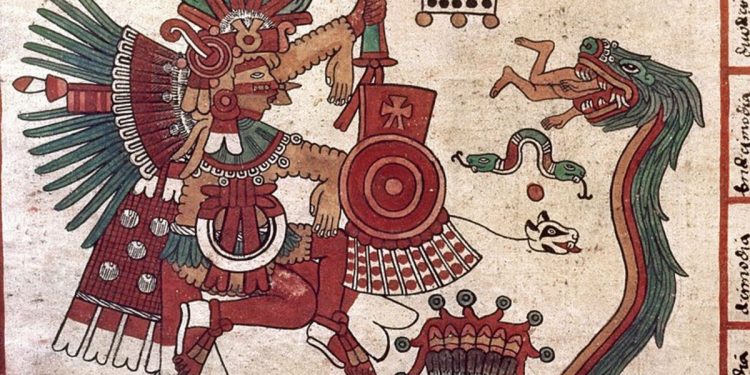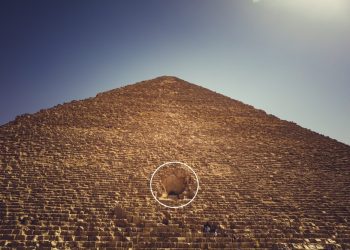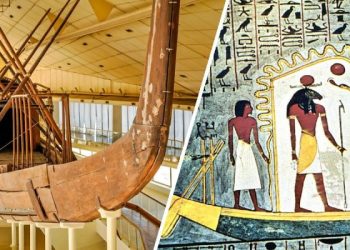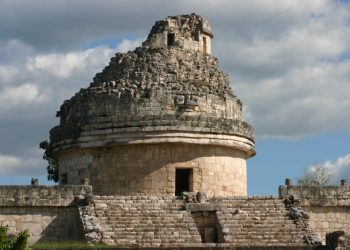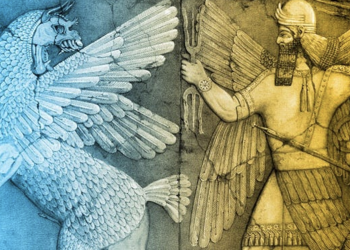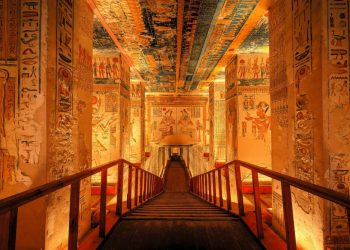Ancient Aztec mythology is rich with stories that intertwine with universal themes, and one of the most captivating is the Great Flood. This myth recounts a cataclysmic event that occurred 4,800 years after creation, forever shaping the land of Anahuac. According to the Aztec narrative, the flood wiped out most of the giants living at the time—except for seven, who either perished or were transformed into fish. Among these survivors was Xelhua, a giant known as “The Architect,” who would later shape history with his monumental creation in Cholula.
The Universal Theme of the Great Flood
The concept of a great flood is not unique to Aztec mythology. Throughout history, civilizations around the world have passed down stories of a catastrophic flood, often viewed as divine punishment for humanity’s sins. These floods are a significant motif in many cultures, with the most famous being the biblical flood of Noah.
However, the biblical tale is neither the oldest nor the sole account. Other cultures offer their own variations of the flood myth, including the story of Matsya from Hindu mythology and Deucalion in Greek myth. Scholars argue that the earliest known version of a flood myth comes from the Epic of Gilgamesh, where Utnapishtim survives a divine deluge meant to destroy humanity.
The similarities between these myths suggest that they could have originated from common sources or were influenced by one another. While scientific evidence supports the occurrence of ancient catastrophic floods, many researchers dispute the idea of a global flood in the last 6,000 years.
Ancient Records of the Great Flood
Sumerian tablets like the Nippur and Eridu Genesis provide some of the earliest written records of a great flood, dating back to around 2,300 BC. These texts, which predate the Bible’s Genesis story, speak of a world-ending flood and the creation of life.
The Aztec Flood Myth: A Unique Perspective
In Aztec mythology, the Great Flood is one of the central stories. The Codex Chimalpopoca, an ancient Aztec document, details the flood’s origins:
“When the Sun Age came, there had passed 400 years. Then came 200 years, then 76. Then all mankind was lost and drowned and turned to fishes. The water and the sky drew near each other. In a single day, all was lost. But before the Flood began, Titlachahuan had warned the man Nota and his wife Nena, saying, ‘Make no more pulque, but hollow a great cypress, into which you shall enter the month Tozoztli. The waters shall near the sky.’ They entered, and when Titlachahuan had shut them in he said to the man, ‘Thou shalt eat but a single ear of maize, and thy wife but one also.’ And when they had each eaten one ear of maize, they prepared to go forth, for the water was tranquil.”
This myth introduces the Aztec version of Noah, named Nota, who, with his wife Nena, survives the flood by following the guidance of the god Titlachahuan. The couple is saved in a hollowed-out tree, and after the floodwaters recede, they emerge, and humanity begins anew.
The Nahui-Atl Era: The Flood of the Fourth Sun
The Aztecs believed in the Five Suns, each representing an era in the world’s history. Each era was marked by a cataclysmic event, and the Fourth Sun, Nahui-Atl, was associated with a massive flood. In this era, the flood turned the inhabitants into fish, and only a few survivors remained—later transforming into dogs.
Our current era, Nahui-Ollin, is prophesied to end in a great earthquake, continuing the cycle of destruction and renewal.
Xelhua: The Architect Who Built Cholula’s Pyramid
After the Great Flood, Xelhua, one of the seven giants who survived, traveled to Cholula. As a tribute to Tlaloc, the god who had saved him during the flood, Xelhua constructed a massive pyramid resembling an artificial hill. This pyramid became an iconic structure in the region.
However, Xelhua’s ambitious project would not go unchallenged. The gods, angered by his audacity, sent fire to strike the pyramid. Many workers perished in the flames, and the pyramid was abandoned, marking the end of Xelhua’s great undertaking.
Conclusion: The Legacy of the Great Flood in Aztec Mythology
The Great Flood, as recounted in Aztec mythology, shares similarities with other ancient flood myths but is unique in its vivid portrayal of the transformation of humanity and the gods’ interventions. Through stories like that of Xelhua and the creation of the Cholula pyramid, the Aztecs left behind a legacy of rich cultural narratives that continue to captivate and intrigue us.
This powerful myth remains a crucial part of Aztec culture, symbolizing survival, divine intervention, and the rebirth of civilization after cataclysmic destruction. The story of the Great Flood is just one example of the timeless power of ancient myths and their ability to resonate across cultures and generations.



